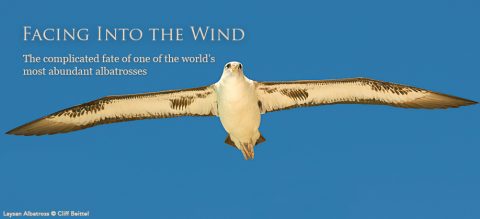Birding Escapes: Homer, Alaska
By Bobby Harrison
From the Summer 2014 issue of Living Bird magazine.
July 15, 2014

In this Birding Escape, I’ve decided to write about an entire town instead of an individual park or wildlife refuge, because Homer, Alaska, has so much to offer birders and wildlife photographers. Nestled on the southwest corner of Alaska’s picturesque Kenai Peninsula, Homer has boreal and temperate rainforests, alpine tundra, and the rich marine environment of Kachemak Bay, providing a haven to a diverse group of seabirds and land birds.
The upland habitat in the Homer area is easily accessed on local roads. Diamond Ridge Road, Skyline Drive, and Ohlson Mountain Road are ideal sites to search for Spruce Grouse, Wilson’s Snipe, Varied Thrush, Pine Grosbeak, White-winged Crossbill, and Pine Siskin. FFA Road provides access to Beluga Lake, which has excellent habitat for Whimbrels, Sandhill Cranes, Lesser and Greater yellowlegs, as well as Steller’s Jays, Boreal Chickadees, and American Three-toed Woodpeckers.
No trip to Homer would be complete without birding on Homer Spit—a fivemile peninsula that separates Cook Inlet from Kachemak Bay. Bayside mudflats provide excellent shorebird watching during the first two weeks of May, when thousands of Western Sandpipers, Dunlins, and Short-billed Dowitchers rest on Mud Bay. Black-bellied and Semipalmated plovers, Whimbrels, Surfbirds, and Black Turnstones can also be found there.
On the Cook Inlet side of the peninsula, look for seabirds, but for a more intimate view, book one of the many sightseeing tours to Gull Island, which lies three miles off the Spit and has a rookery of Tufted Puffins (see photo at left) and Horned Puffins, Red-faced and Pelagic cormorants, kittiwakes, and Common Murres. A boat tour provides up-close views of these species.
One of the most magnificent birds on Homer Spit and around Kachemak Bay is the Bald Eagle. These spectacular raptors often perch in nearby trees or catch fish from the surrounding waters. The best time to visit Homer is from early May to mid-July. With spectacular scenery and an abundance of seabirds, shorebirds, and passerines, Homer is one of Alaska’s best birding escapes.
Directions
From Anchorage International Airport, take W. International Airport Road 2 miles to Minnesota Dr. S., merge right onto Minnesota Dr., travel 4.7 miles, then turn right onto New Seward Highway. Continue 82 miles, then make a slight right onto the Sterling Highway. Continue 132 miles to Homer.
On the Web


All About Birds is a free resource
Available for everyone,
funded by donors like you





